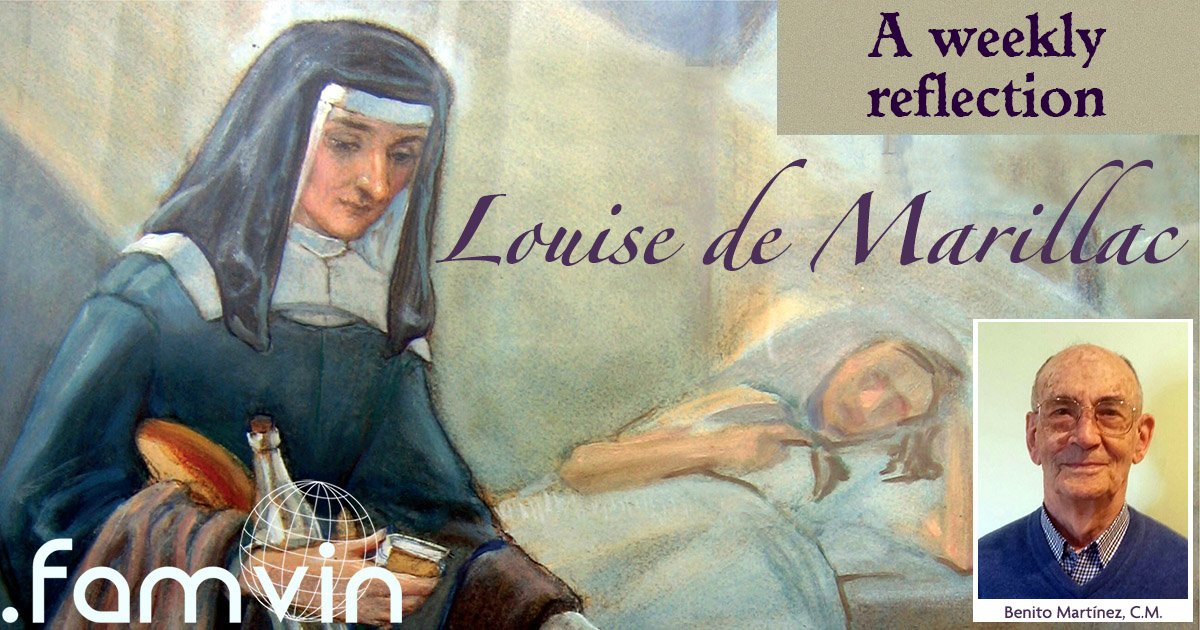“The worker De Ferrandine knows how to make thick cotton cloth with hair on one of its faces, ordinary cloth and silk cloth, that sells well in good weather; accepts to teach willing people, to work with him: he has found for sale some fully equipped workshops; it would be very convenient that someone with enough understanding goes with him to see them in order to make the purchase. The good thing for the work, both in the spiritual and the temporal, is that there is no useless person in it, especially at the beginning.
It would be necessary for the charitable people to live together with the people who come to us to work, to make a judgment of them, and to inquire about their life and customs.”
Louise de Marillac, A. 102 (French edition).
Reflection:
A bourgeois gave St. Vincent 100,000 pounds for the poor. St. Vincent thought that he could not spend them without putting them towards production. The Congregation of the Mission had two houses on a property called “the Name of Jesus.” There he placed looms for 20 men and 20 women, and commissioned Saint Louise to organize it. Although she was a woman of contemplative prayer, she had her feet on the ground. She took pen and paper and began to design his work:
- She is convinced that the looms are not very productive in Paris, because the workers cost a lot and the rents of houses were expensive. But she already had the place and funds. In addition, she believes that God has some design on this initiative, because He has inspired some weavers to offer themselves to teach beggars; and although it is requires a great expense to start it, she trusts to be able to amortize it. In addition, with this work she can give work to many people. Several boys —that need and ignorance lead to offend God— apply, and she would accept those who have good will. Also, a good ruined merchant man offered himself to help her assemble the work.
- And she devised a trick: she asked some honest weavers to pretend being beggars and to mix between the real beggars, although she would have to give them wine at meal times. It was not much expense and they would teach the trade more easily to the beggars and they would transmit good behavior. One of them was Ferrandine.
- In order not to abuse the workers, he asks Saint Vincent the wages paid in Paris, suspecting that, on the outskirts, where his looms were, the wages would be lower.
- To reduce costs, she searches through the Sister communities, as if they were agencies, the times and places to buy the materials at lower prices and where she would sell her products at a better price.
- That is, these looms were works of charity, but also social works. No one doubts that Saint Louise de Marillac was mystic with contemplative prayer, showing that the deeper the prayer of a person, the greater is the light and strength that she receives from the Holy Spirit to undertake giving works for the good of the poor. And this light and strength gives us an advantage over other lay institutions.
- The current model may be the volunteers of the AIC and Frederic Ozanam and his Society of St. Vincent de Paul: he read to Saint Vincent and is one of the best interpreters of his thought.
Questions for dialogue:
- As Vincentians, what works have we undertaken?
- How do we organize them?
- Are they spiritual and material works? Charitable and social?
- Where do we place them? What for?
Benito Martínez, C.M.






0 Comments